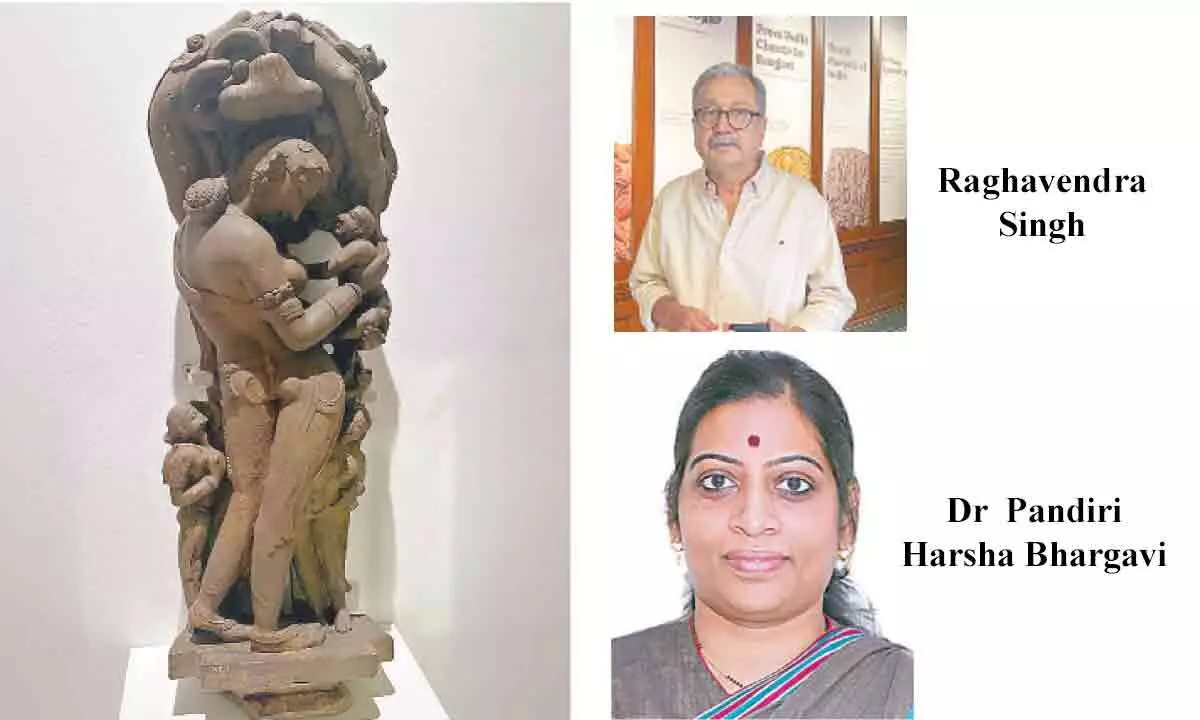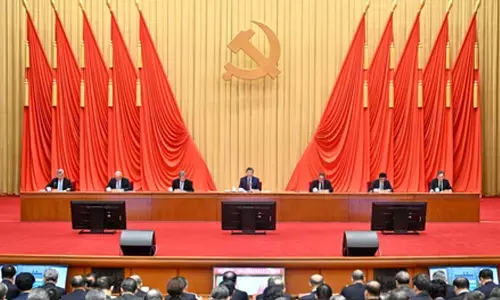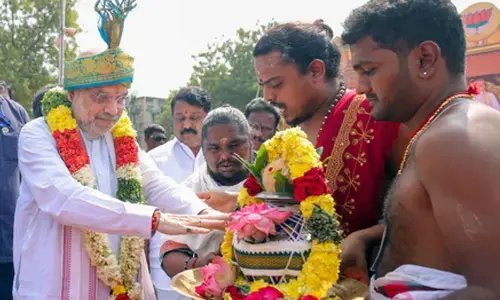Exploring ‘Roots and Routes’

The exhibition ‘Roots and Routes’ in the National Gallery of Modern Art, New Delhi, explores India’s civilizational heritage, ethos, and interconnectedness through various mediums such as archaeological artifacts, literature, numismatics, epigraphy, and paintings
The exhibition ‘Roots and Routes’ explores India’s civilizational heritage, ethos, and interconnectedness through various mediums such as archaeological artifacts, literature, numismatics, epigraphy, and paintings. The exhibition engages G20 priorities, focusing on the core values of ‘Vasudhaiva Kutumbakam’, such as respect for nature, democracy, gender equality, and education. The G20 country connection is also explored through shared global traditions. Trans-national subjects like Shringar, Sangeet, and Prakriti are depicted, while Indian literature and art mirror each other.
The exhibition’s outreach through various mediums, including language, philosophy, religion, literature, sculpture, paintings, and overland and maritime routes, is curated after careful research. The selection of artifacts was carefully considered, focusing on historical significance, artistic merit, and thematic relevance. The curatorial challenge was made possible through close collaboration with partners and meticulous logistical planning. The exhibition showcases a rare assemblage of Indian sculptures, Gandhara and Mathura art pieces, Chola Bronzes, manuscripts, and paintings. The continuous dialogue between ‘Roots and Routes’ takes center stage, presenting voices, thoughts, and relatable stories.
The curatorial walkthrough commences with a connection of Indian Roots from a beautiful sculpture of Shalabhajika from the 1st century AD, which indicates the flora and is followed by a bronze sculpture of lord Nataraja, conveys the Indian conception of the never-ending cycle of time and destruction of ignorance by allowing birth of knowledge. Followed by a sculpture of Yoga Narasimha, Vishnu’s Man-lion incarnation. The meditative pose reflects bringing peace and order to the world.
On the other side, the tour starts with the three installations: the wood carving replicating navigation mode with detailing, the inscription of Buddhagupta’s inscription having a sketch of a navigator, a log book from the 16th century and a sculpture of Maitreya which was curved in Greek style. These aspects reflect that the routes were connecting cultures, shared traditions, skills, technology and trade.
The most exciting part of the exhibition is the Gandhara Jewellery section, where the intricate work on gold ornaments is seen on necklaces, bracelets and fingerrings. The jewellery has a blend of Indo-greek artistry with a cultural fusion of indigenous designs. Sculptures like The Great Departure, the Great Demise of Buddha, the cremation of Buddha, and scenes of Kapilavastu Palace popularized Buddhism during the period.
Mathura School of art influences sanatan, Buddhism and Jainism. As Mathura is an ancient route, it strongly influences Iranian and Indo-Bactrian or the Gandhara Art. It also has a fusion of old Indian folk, like worship of the Yakshas and the Nagas. While Gandhara style has more use of grey schist or slate stone quarried from local hills. It has an influence of Greek, Bactrian, Roman, Iranian, and Scythian. The exhibition has a key gallery on the Sanskrit language, which has contributed to the composition of great works in literature and poems and recorded the civilizations in various timelines.
The gallery of great epics of Ramayana and Mahabharata in the form of literature and poems included paintings informing the reader with details. Other galleries in the exhibition on Governance, Sangeet, Nature and Shringar give history, connection and culture for the young generation.
The exhibition includes modern artwork of Indian artists and also G 20 Countries. The artwork installation connects India’s culture through the strokes, elements and storyline used by the artists on various occasions. There is a special section for the yoga; paintings with yoga postures are showcased, and paintings of Nicholas Roerich who has contributed to the protection of the world’s heritage.
The exhibition has partnered with institutions like Indian Museum, Kolkata, Government Museum, Chennai, Government Museum, Chandigarh, Asiatic Society, Kolkata, Government Museum, Mathura, National Museum, New Delhi, National Gallery of Modern Art, National Library, Kolkata, Site Museums of ASI: Sarnath, Nalanda, Nagarjunakonda and Sanchi, Indira Gandhi National Center for Arts, New Delhi. It stands to the credit of these institutions that a splendid and rare assemblage of Indian sculpture of the Amravati friezes, the Gandhara and Mathura art pieces, Chola Bronzes, manuscripts and paintings could be brought together for this exhibition.
The exhibition is in the National Gallery of Modern Art, New Delhi, and the timings of the visit are from 11 AM to 6:30 PM. It’s open on all days except Monday with a minimum ticket of Rs.20 for Indian Nations and 500 $ for foreign nationals, free for school and college students with a display of Identity cards.
(The writer is an Assistant Director on deputation with the National Gallery of Modern Art, Ministry of Culture, New Delhi)














